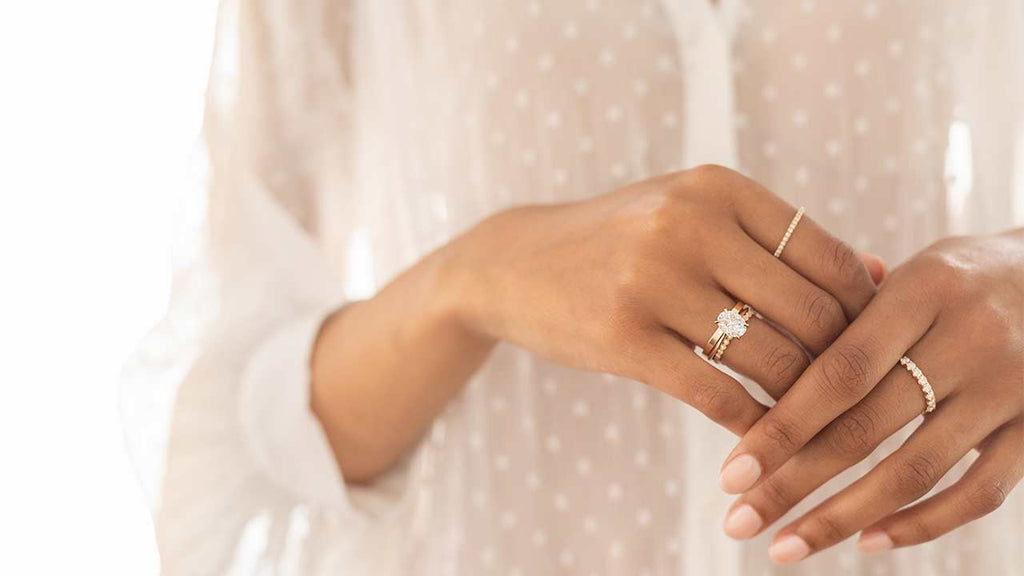When it comes to choosing the perfect diamond, whether it’s for an engagement ring or other fine jewelry, understanding the 4Cs of diamonds is crucial. The 4Cs refer to Cut, Color, Clarity, and Carat Weight, and they play a significant role in determining the quality and value of a diamond. While natural diamonds have been the focus of these grading factors for many years, lab grown diamonds now follow the same 4Cs grading system. This article will break down the lab grown diamonds 4Cs to help you make an informed decision when purchasing a lab-grown diamond.
Table of Contents
The Cut of Lab Grown Diamonds
The cut of a diamond is perhaps the most important of the 4Cs, as it has the greatest impact on the overall appearance and brilliance of the diamond. The cut refers to how well the diamond has been shaped and faceted, and it directly affects how light interacts with the stone. Lab grown diamonds, like natural diamonds, are graded based on how well they reflect and refract light, with ideal cuts showing the most sparkle.
A well-cut lab grown diamond will display brilliance and fire, making it appear more vibrant and eye-catching. The cut grading is divided into several categories, such as Excellent, Very Good, Good, Fair, and Poor. When looking at lab grown diamonds, you want to focus on those with higher cut grades to ensure the diamond reflects light beautifully. Whether you choose a round, oval, or princess cut lab diamond, the cut will have a significant impact on the diamond’s visual appeal.
The Color of Lab Grown Diamonds
Color is another important factor when evaluating lab grown diamonds. In general, diamonds are graded on a scale from D to Z, with D representing a completely colorless diamond and Z indicating a diamond with noticeable yellow or brown tones. Lab grown diamonds, just like natural diamonds, are graded using this same color scale, meaning you can expect the same level of clarity and consistency in color when choosing your stone.
For those seeking a diamond with minimal color, the highest grade is D, which is completely colorless. Most lab grown diamonds fall within the G-H range, offering near-colorless diamonds that are still very beautiful but more affordable. While the color of a diamond is important to consider, it’s essential to remember that lab grown diamonds offer an array of color grades that allow you to choose a diamond that fits your budget and style. A higher-quality color grade will typically result in a brighter, more vibrant diamond.
Clarity of Lab Grown Diamonds
Clarity refers to the presence of internal or external imperfections, also known as inclusions and blemishes, in a diamond. The clarity of a lab grown diamond is graded based on the number, size, location, and visibility of these imperfections. Lab grown diamonds are created in controlled environments, meaning they often have fewer inclusions compared to natural lab diamonds. As a result, many lab grown diamonds feature higher clarity grades, making them an attractive option for those seeking a pristine, flawless look.
The clarity scale ranges from Flawless (FL) to Included (I1, I2, I3), with several grades in between, such as VVS (Very Very Small Inclusions) and VS (Very Small Inclusions). The fewer inclusions a diamond has, the higher its clarity grade will be. For those looking for a diamond with minimal imperfections, selecting a lab grown diamond with a clarity grade of VS1 or VS2 will offer an excellent balance of quality and value. Lab grown diamonds often offer clearer stones than natural diamonds due to the precision of the growing process.
Carat Weight of Lab Grown Diamonds
Carat weight refers to the size of the diamond and is one of the most straightforward of the 4Cs. One carat is equivalent to 0.2 grams, and lab grown diamonds, like natural diamonds, are measured by their carat weight. While carat weight is an important factor in determining a diamond’s size, it’s essential to keep in mind that the cut and overall proportions of a diamond also play a role in its visual size. A well-cut lab grown diamond may appear larger than a diamond of the same carat weight with a poor cut.
When selecting a lab grown diamond, you can choose from various carat weights to fit your desired size and budget. Larger diamonds are typically more expensive, but lab grown diamonds can offer significant savings compared to their natural counterparts, allowing you to purchase a larger stone without breaking the bank. It’s important to balance carat weight with the other 3Cs—cut, color, and clarity—so that you end up with a diamond that looks stunning and fits your preferences.
Why the 4Cs Matter for Lab Grown Diamonds
Understanding the 4Cs of lab grown diamonds is crucial because they provide a standardized way of evaluating and comparing diamonds. The grading system ensures that you can make informed decisions when purchasing your diamond. Whether you’re choosing a lab grown diamond for an engagement ring or another piece of jewelry, considering all of the 4Cs—cut, color, clarity, and carat weight—will help you find the best diamond within your budget.
Lab grown diamonds offer numerous advantages over natural diamonds, including ethical sourcing and lower prices, but the 4Cs remain the best way to assess the quality and value of these diamonds. By paying attention to the 4Cs, you ensure that your lab grown diamond will be of the highest possible quality and will meet your expectations for appearance, size, and overall performance.
How to Choose the Right Lab Grown Diamond Based on the 4Cs
When choosing a lab grown diamond, it’s essential to find the right balance between the 4Cs to ensure that you get the best value for your budget. For example, if you want a diamond that looks larger, focus on the cut and carat weight. If you prefer a more colorless diamond, choose one with a high color grade, such as D or E. If clarity is your priority, you may want to choose a diamond with a VS1 or VS2 clarity grade for a nearly flawless appearance.
Remember that lab grown diamonds are graded the same way as natural diamonds, and each of the 4Cs will affect the diamond’s price and appearance. By determining which factors are most important to you, you can confidently choose a lab grown diamond that meets your style preferences and budget.
Conclusion: Lab Grown Diamonds and the 4Cs
In conclusion, understanding the 4Cs of lab grown diamonds—cut, color, clarity, and carat weight—is essential for anyone looking to purchase a beautiful, high-quality diamond. The 4Cs provide a standardized way of evaluating and comparing diamonds, ensuring you get the best value for your money. While lab grown diamonds offer numerous advantages, such as ethical sourcing and affordability, their quality is still determined by the same grading system that applies to natural diamonds.






